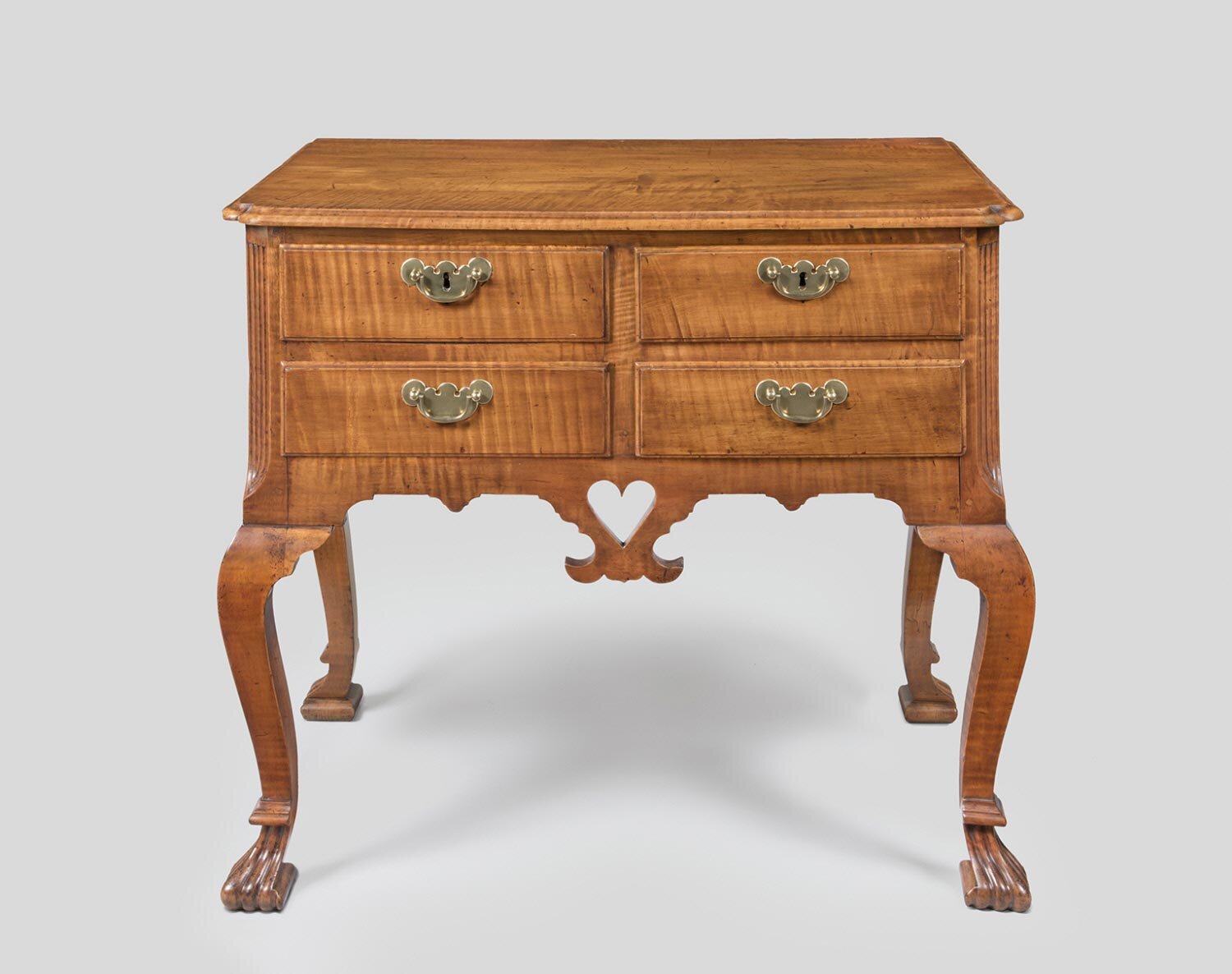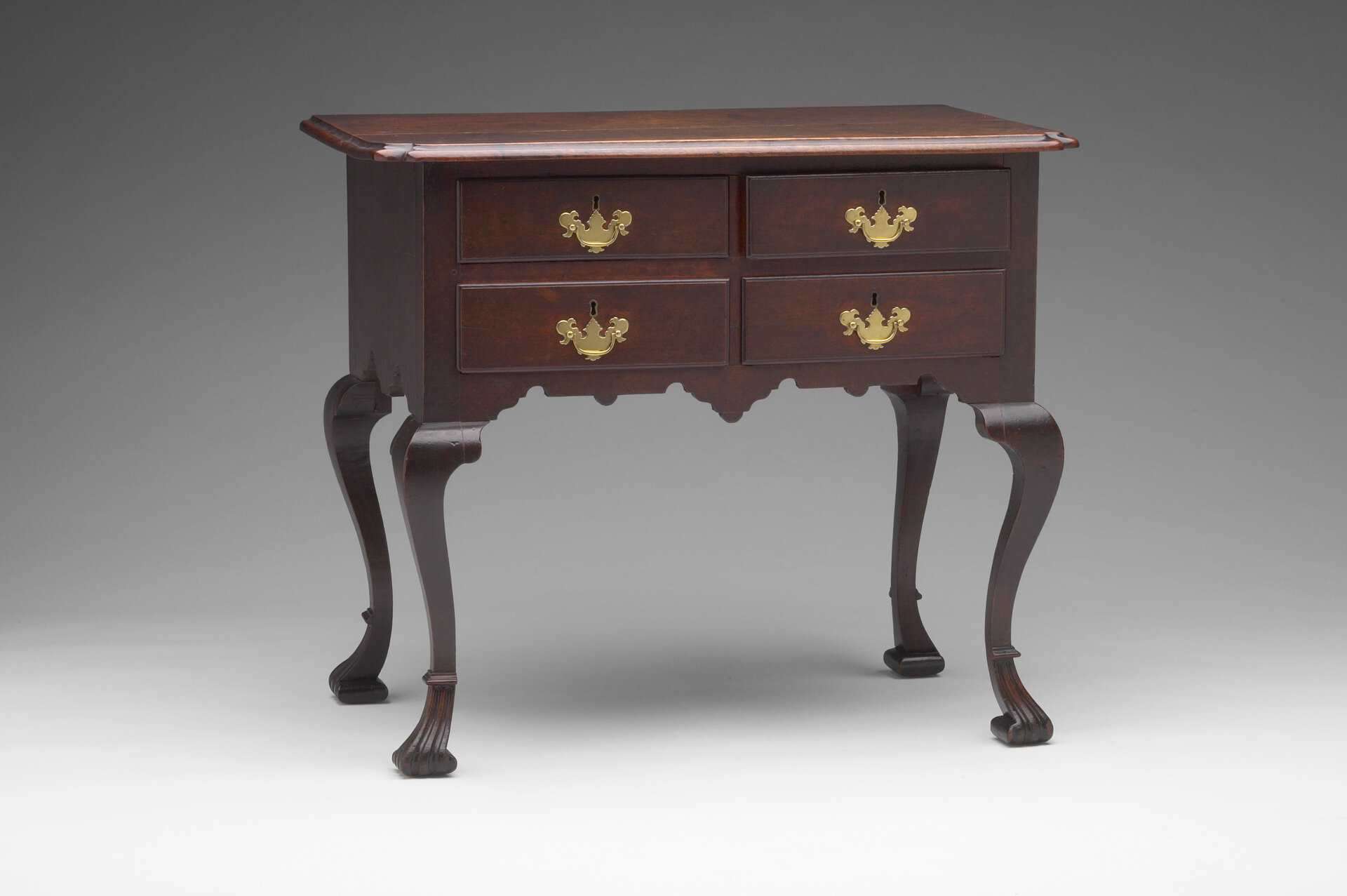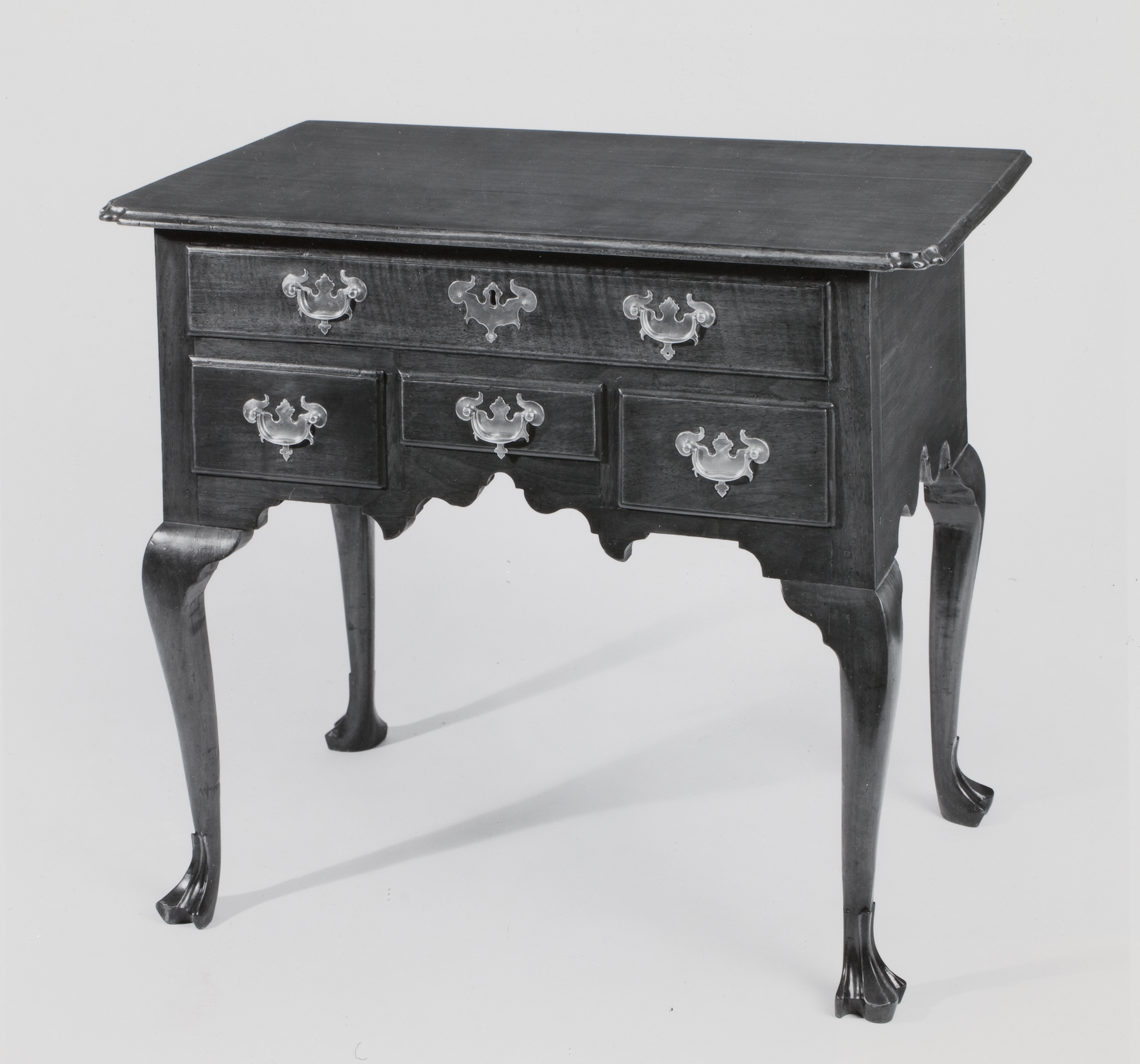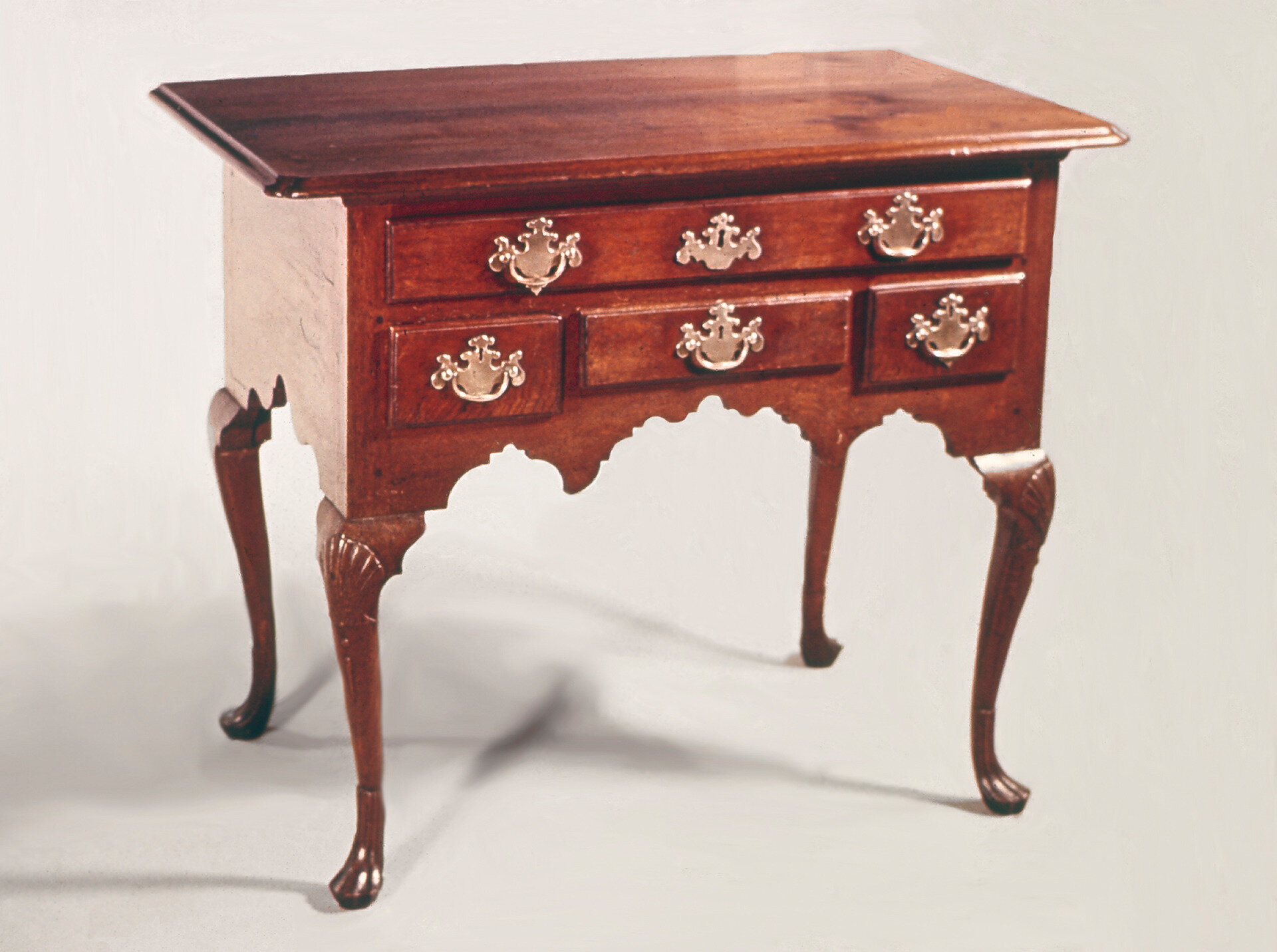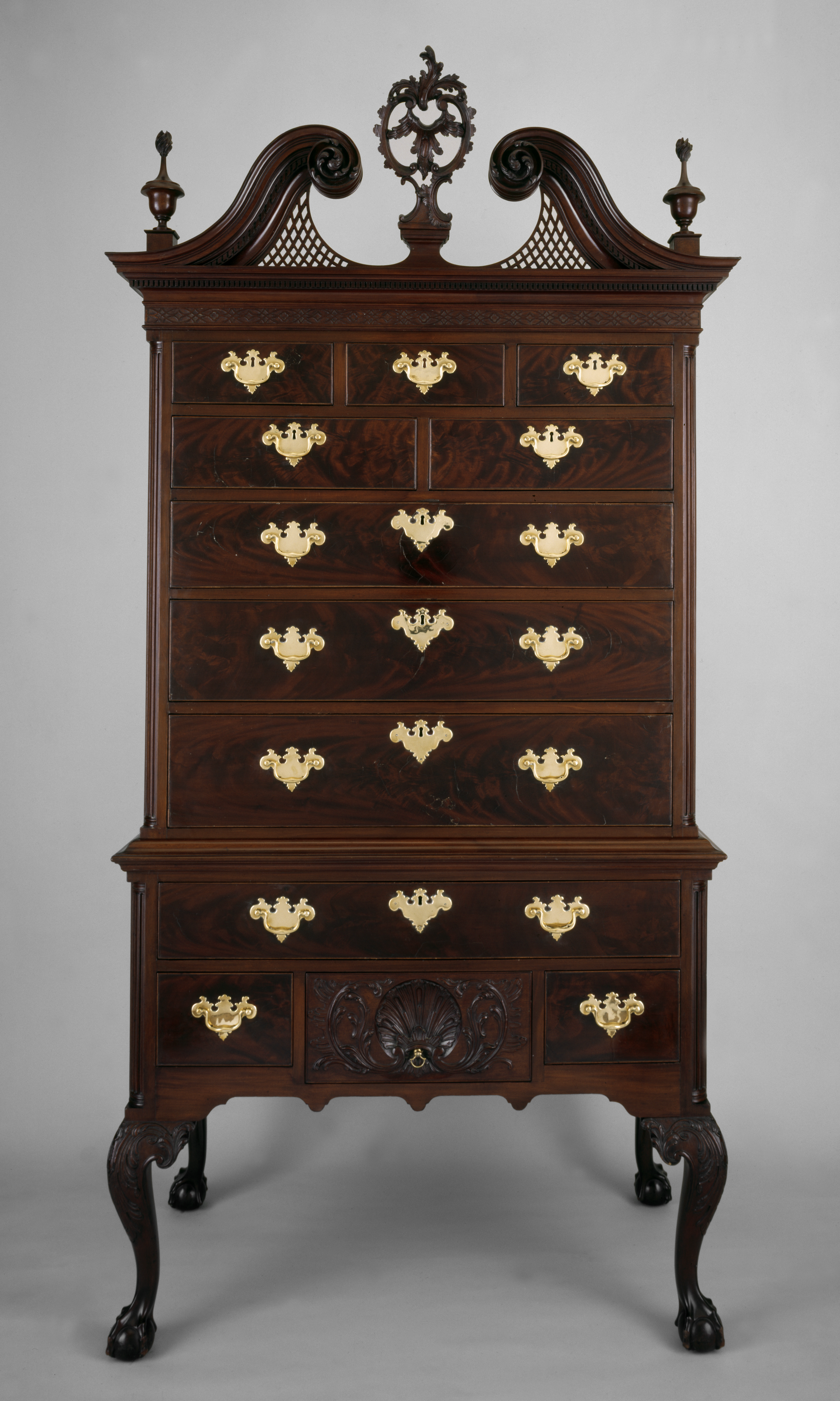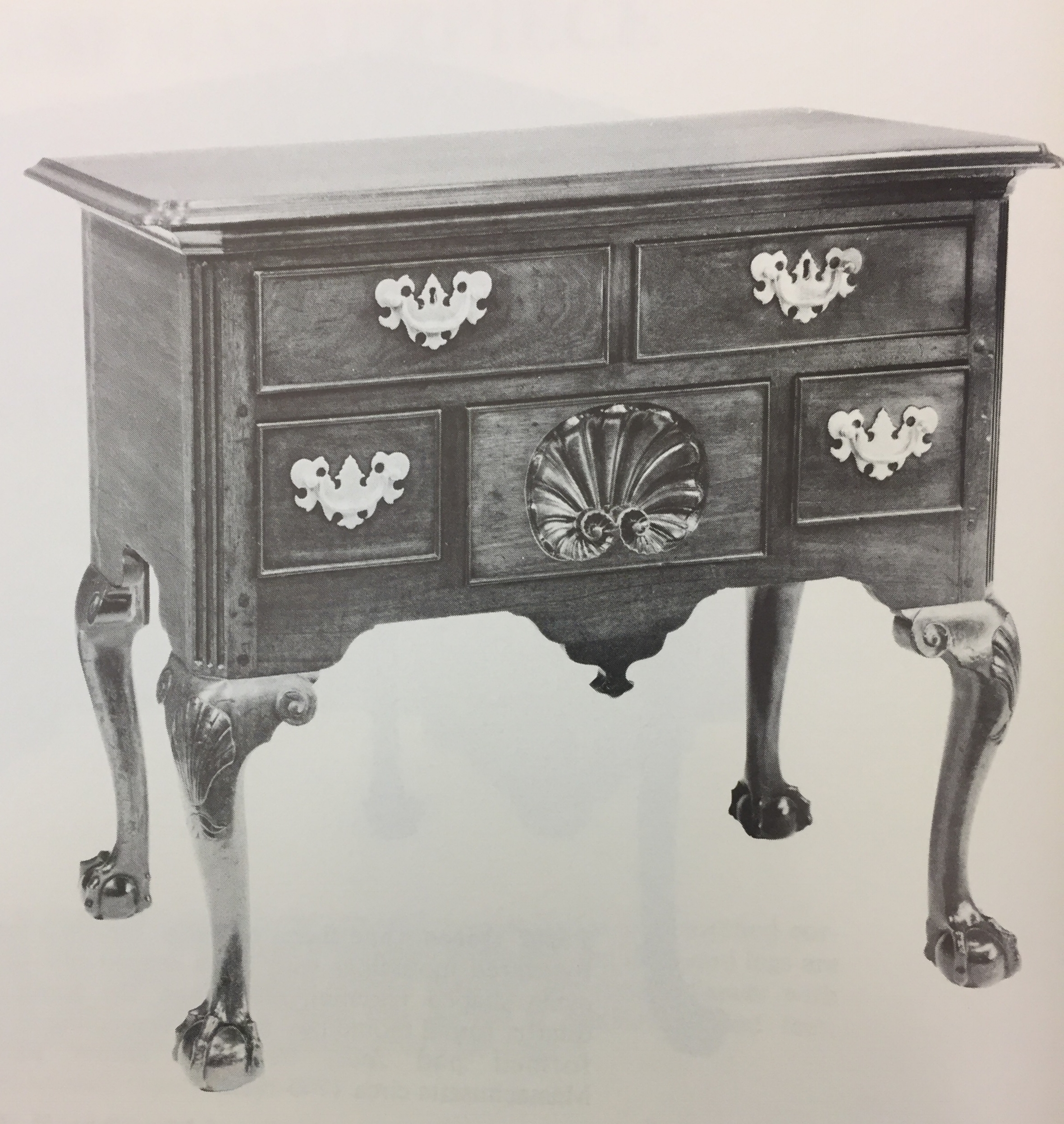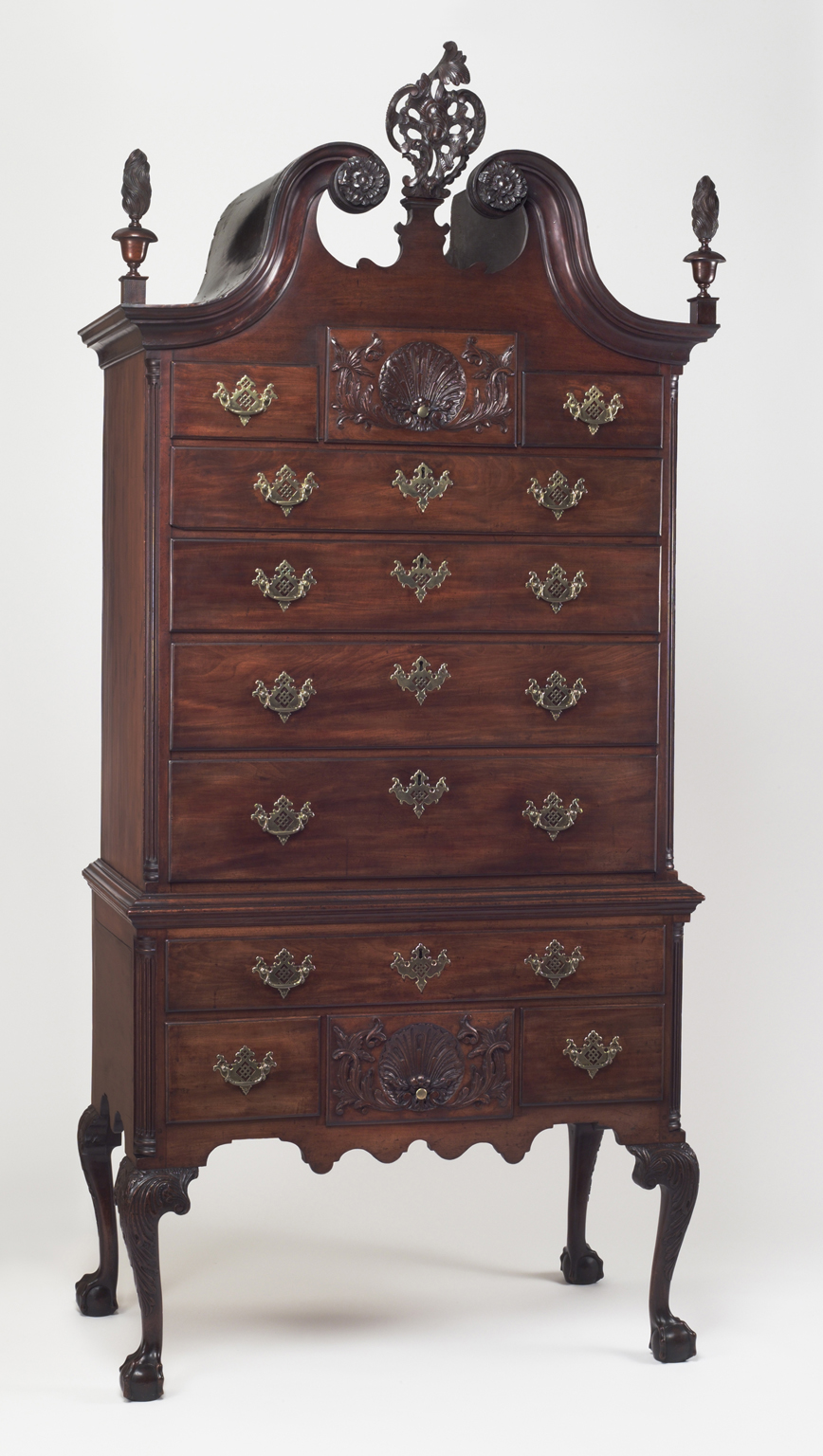Flat Passage
A predominant long flat passage flanking a central ornament or arch
Early
Characteristics:
Rail: Arch to long flat passage with nodules and a central pendant
Drawer Configuration: Two drawers over two drawers
Top: Ogee and square
Case: Square and canted fluted
Legs: Springy cabriole
Feet: Scroll volute
Known makers: Henry Finney (1719—1744); Isaac Moss (1723-1790) and Richard Moss (b.1724)
Best examples:
PMA 1995-138-2
Wright’s Ferry Mansion, 75.1, illus. in Schaefer, Kindig et al, vol. 2, no. 42
W.M. Hornor, Blue Book, pl. 17
American Antiques from the Israel Sack Collection, vol. 8, 2240, 2241
Wallace Nutting, Furniture Treasury, vol. 1, no. 422
Magazine Antiques, December 1982, 1248, figs. 2, 3
Freeman’s, Philadelphia, November 12, 2014, lot 114
Dressing Table
Henry Finney (1719—1744)
Philadelphia, 1739-44
Maple, tulip poplar, white cedar, yellow pine; brass
29 1/2 x 32 1/2 x 20 inches
Philadelphia Museum of Art
Purchased with funds from various donors and partial gift of the Kaufman Americana Foundation, 1995-138-2
Dressing Table
Delaware Valley; Probably New Jersey, 1740-60
American black walnut, southern yellow pine
29 1/16 × 33 7/16 × 20 11/16 inches
Yale University Art Gallery
Mabel Brady Garvan Collection 1930.2275
Mid
Characteristics:
Rail: Scroll to flat passage (with and without ornamentation), cusp and then raised central arch usually to accommodate long, narrow central drawer
Drawer Configuration: One drawer over two or three drawers; if three drawers, central drawer narrow and raised above the flanking drawers
Top: Ogee or squared
Case: Squared, fluted canted, or fluted quarter column corners
Legs: Cabriole
Feet: Spanish brush, paneled pad, or ball and claw
Known makers:
Best examples:
W.M. Hornor, Blue Book, pls. 55, 58, 61
Wallace Nutting, Furniture Treasury, vol. 1, no. 408
American Antiques from the Israel Sack Collection, vol. 4, P3603; vol. 5, 1288; vol. 6, 1635
Skinner, Boston, May 1984 (sale #959), lot 168
Dressing Table
Repaired by John Janvier in 1799
1750–70
American black walnut, southern yellow pine, tulip poplar, Atlantic white cedar
28 1/4 x 34 x 21 1/4 inches
Courtesy Israel Sack, Inc., Archive, Yale University Art Gallery
Dressing Table
Delaware Valley; Possibly New Jersey, 1750–80
American black walnut; back, southern yellow pine; drawer sides and backs, tulip poplar drawer bottom, Atlantic white cedar
29 3/4 × 34 13/16 × 20 1/4 inches
Yale University Art Gallery
Mabel Brady Garvan Collection 1930.2088
MID: Large Central drawer with cusps
Characteristics:
Rail: Arches with flat passage tops flanking a central series of scrolls positioned lower than the arches
Drawer Configuration: Usually one long drawer over three with a larger, carved central drawer, or no central drawer due to rail’s high arch
Top: Ogee and squared
Case: Squared, fluted canted, and fluted quarter column
Legs: Cabriole
Feet: Paneled pad, ball and claw
Known makers:
Best examples:
Christie’s, New York, September 20, 2016, lot 850 (three over three drawers)
Dressing Table
Philadelphia, 1760–80
Walnut
30 ¼ x 34 ½ x 20 inches
Christie’s, New York, January 18—19, 2007, lot 609
MID II
Characteristics:
Rail: Straight, with flat passages punctuated by two or three pendants
Drawer Configuration: One long drawer over three drawers, usually of the same height, but some have larger, carved central drawer
Top: Ogee and squared
Case: Squared, fluted canted, and fluted quarter column
Legs: Cabriole
Feet: Paneled pad, ball and claw
Known makers:
Best examples:
American Antiques from the Israel Sack Collection, vol. 8, P3339
High Chest of Drawers
Unknown American
c. 1760–1800
Mahogany; mahogany, Atlantic white cedar, cedar, southern yellow pine, and yellow-poplar
94 3/8 × 46 1/2 × 30 5/8 inches (239.7 × 118.1 × 77.8 cm)
The Museum of Fine Arts, Houston
The Bayou Bend Collection, Gift of Miss Ima Hogg, B.69.75
Later I: MIller-worley group
Characteristics:
Rail: Flat passage on side arches, low-hanging central pendant with carved convex shell
Drawer Configuration: One drawer over three; three drawers are same height; drawers all same height
Top: Ogee corners
Case: Fluted canted
Legs: Cabriole
Feet: Ball and claw
Known makers:
Best examples:
Miller-Worley dressing table
corresponding high chest: Sotheby's, sale no. N08513, January 24, 2009, lot 92
Dressing Table
Philadelphia, 1750–55
Walnut, yellow pine, tulip poplar, white cedar
29 3/4 x 34 x 21 inches
Leslie Anne Miller with Alexandra Kirtley, Start With a House, Finish With a Collection. New York: Scala, 2014, 228, illus.
Low Chest of Drawers
Philadelphia, 1760–65
Mahogany, pine, and brass
31 × 36 1/4 × 21 1/4 inches
Detroit Institute of Art
Gift of Robert H. Tannahill 29.334
Later II
Characteristics:
Rail: Flat passage with scrolls and a central fishtail-like pendant
Drawer Configuration: Two over two drawers or two over three drawers
Top: Ogee
Case: Fluted canted or quarter columns
Legs: Cabriole
Feet: Ball and claw
Known makers:
Best examples:
American Antiques from the Israel Sack Collection, vol. 8, 2112, P5571
Dressing Table
1760–80
Mahogany
30 x 34 x 20 3/4 inches
American Antiques from the Israel Sack Collection, P5571
Flat passage with shell drawer i
Characteristics:
Rail: Flat passage (sometimes with a drop or notch) with scrolls, cusps, and with or without a central shell pendant
Drawer Configuration: One over three drawers, with a central shell carved
Top: Ogee
Case: Fluted canted or quarter columns
Legs: Cabriole
Feet: Ball and claw
Known makers: George Claypoole (1733-1793); Thomas Affleck (1740—1795)
Best examples:
PMA 1974-135-1 (deaccessioned)
Museum of Fine Arts, Houston B.69.68, B.69.64
American Antiques from the Israel Sack Collection, vol. 4, P3801; vol. 6, 1594-95, P4679; vol. 7, 2059, P4882
W.M. Hornor, Blue Book, pls. 142, 151, 153
Wallace Nutting, Furniture Treasury, vol. 1, no. 440
High Chest
Philadelphia, 1755–65
Mahogany, tulip poplar, white cedar, brass
7 feet 3 1/2 inches x 3 feet 8 inches x 2 feet 1/4 inches
Philadelphia Museum of Art
1974-135-1 (deaccessioned)
Flat Passage with shell drawer II
Characteristics:
Rail: Flat passage (with or without nub) with low scrolls, cusps, and a central, high pendant
Drawer Configuration: One over three drawers, with a central shell carved
Top: Ogee
Case: Fluted canted or quarter columns
Legs: Cabriole
Feet: Ball and claw feet
Known makers:
Best examples:
American Antiques from the Israel Sack Collection, vol. 5, P4194
High Chest
Unknown Maker
Philadelphia, 1760–75
Walnut
96 1/4 x 43 3/4 x 23 3/4 inches
1959.1862, Bequest of Henry Francis du Pont
Courtesy of Winterthur Museum
Dressing Table
1760–80
Walnut
29 x 34 x 21 1/2 inches
American Antiques from the Israel Sack Collection, 4194
